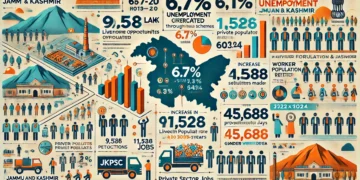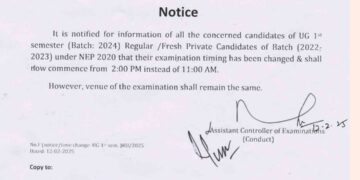50% Less Rainfall in the First Two Months; A heat wave intensifies in some areas of Kashmir; an independent weather forecaster predicts that the weak monsoon conditions will persist; MeT Predicts Temperature Decline Beginning on July 29
By Dost Muhammad Wani
july 25
Srinagar According to data, Jammu and Kashmir has had a notable decrease in precipitation this year; from January 1, 2024, to July 25, 2024, there was a 27% decrease in rainfall.
The area is experiencing a severe heat wave even if this month’s rainfall is below average. On Thursday, the highest temperature recorded in Srinagar was 34.5 degrees Celsius.Temperatures in several areas of Kashmir have increased dramatically due to the heat wave. Kokernag had a temperature of 32.8 degrees Celsius, which was 5.4 degrees above normal, while Srinagar recorded 34.5 degrees Celsius, which was 1.1 degrees lower than the previous day.
Temperatures were 5.1% and 4.0 degrees above average at Qazigund, the entry point to Kashmir, and Kupwara, in north Kashmir, respectively, with readings of 33.0 and 35.1 degrees Celsius.These regions are experiencing a severe heat wave as a result of the high temperatures, and forecasts indicate that the following three days will be extremely hot.The division of Jammu experiences comparable high temperatures and humidity. The temperature in Jammu city was recorded at 35.6 degrees Celsius, whilst the temperatures in Katra and Batote were 31.4 and 28.8 degrees Celsius, respectively.
Since the start of the year, Jammu & Kashmir has seen a 27% decrease in rainfall.A 48% decrease in rainfall was observed in January and February, with only 117.1 mm falling as opposed to the usual 225.5 mm. With 300.6 mm of rain instead of the average 330.0 mm from March to May, there was a 9% shortfall. There was a 33% decrease in rainfall between June and July 25.
This year, Jammu and Kashmir was mostly spared from Western Disturbances, according to independent weather forecaster Faizan Arif Keng. Following a considerable shortfall in January, there was a slight rebound in February, and from March through May, rainfall levels were almost normal. Nevertheless, since June, the monsoon has been quite poor, especially during the last 20 days, which has led to low water levels in streams and rivers.Even though a large portion of India has been receiving normal to excessive amounts of rainfall, Jammu and Kashmir’s monsoon has not improved. Particularly in recent years, there appears to be an inverse link between Jammu & Kashmir’s monsoon rainfall and that of India.
Dr. Mukhtar Ahmad, the director of the meteorological department, said that rain would start on July 29 and that the heat wave might break by the end of the month. The area’s crops have also been damaged by the current heat wave and little rainfall.










































